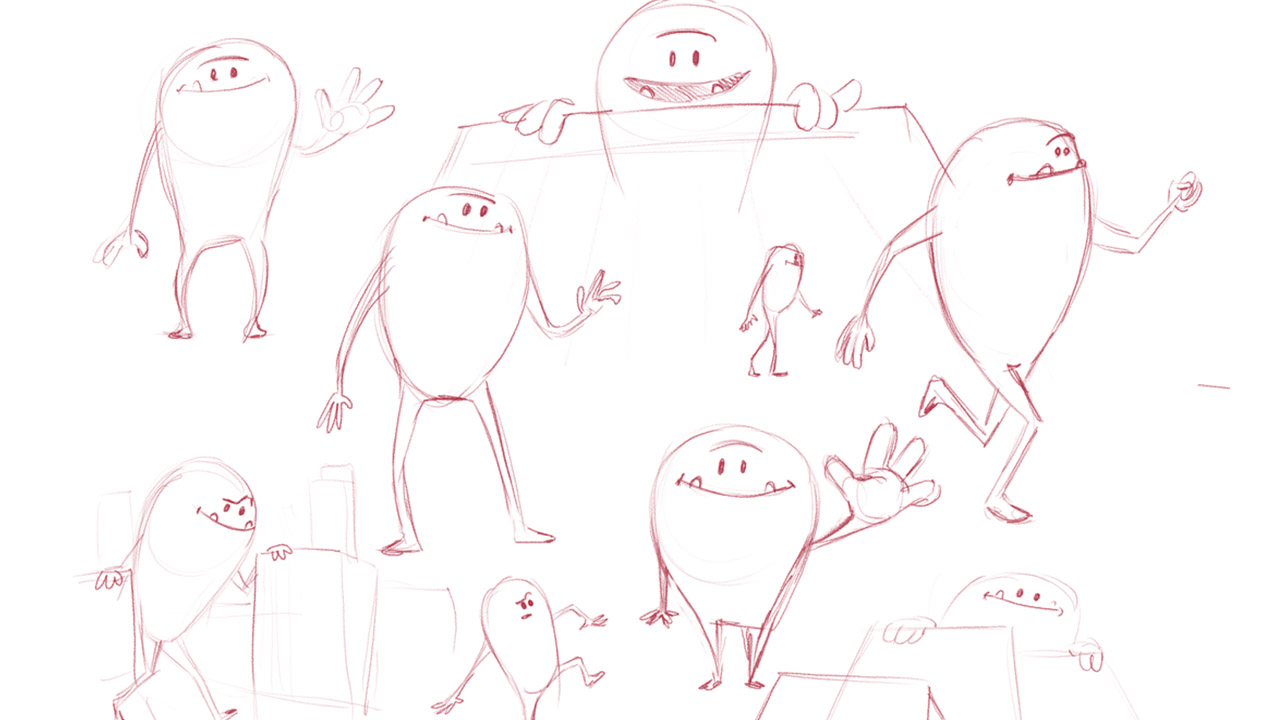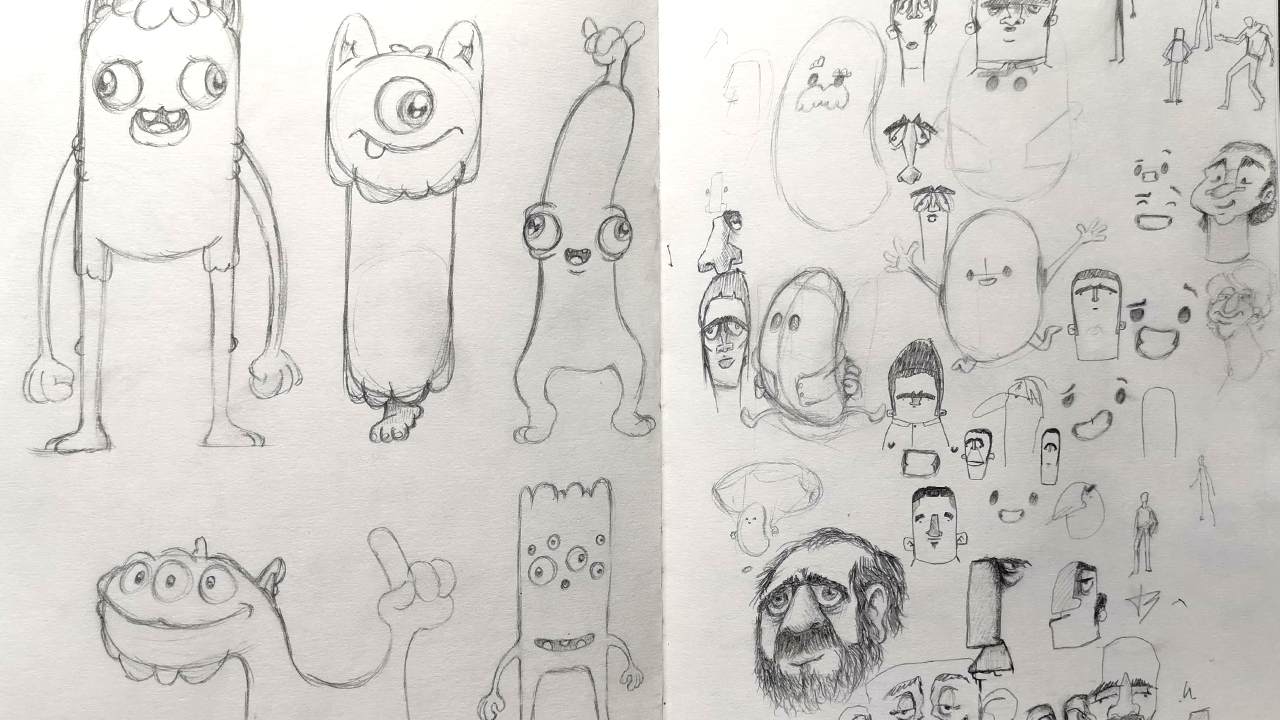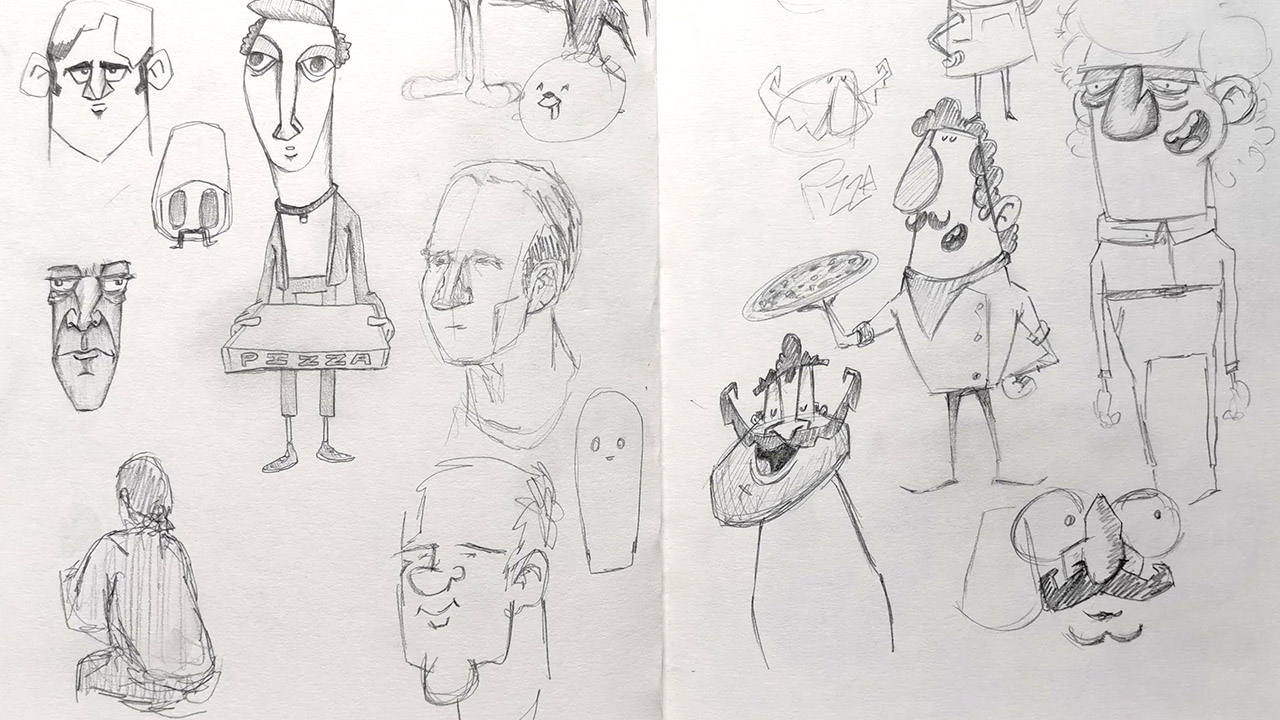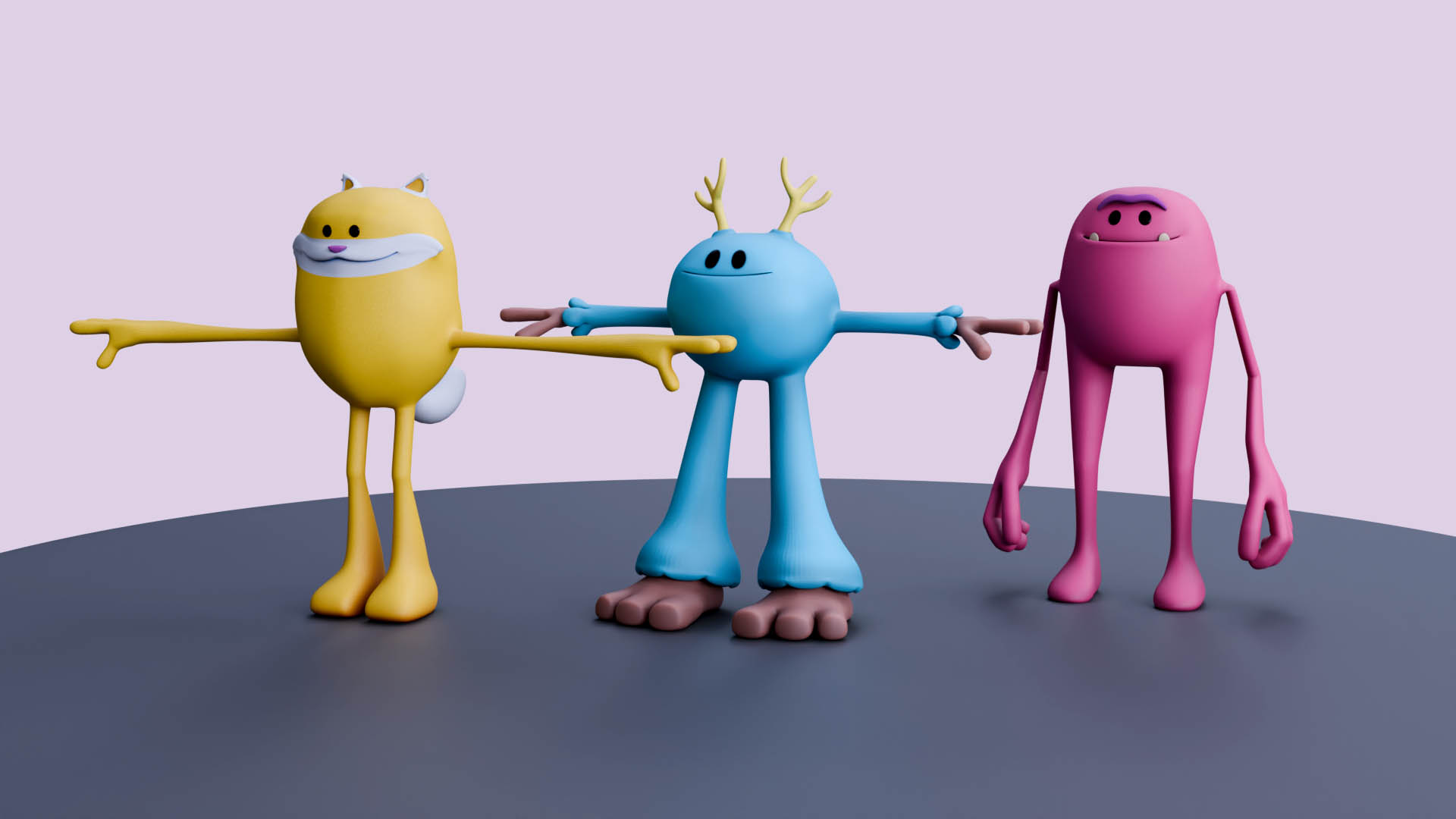
Coming from a 2D animation background, transitioning into 3D, I was naturally drawn to characters. We’ve been working with 3D characters for a while, but I’ve primarily designed the characters, producing sketches for the 3D team to build. Their constant moans about turnarounds not being accurate was beginning to grate. So I thought at the very least, I could prove to them that it’s fine, and they just need to use their imagination.
One morning commute, stuck in traffic on the top deck of a bus heading down Rochdale Road, the Manchester Skyline seemingly sprouted two more skyscrapers before I’d made it to the World Famous Embassy Club (complete with its crumbling mosaic monument to bigotry).
I imagined a family of giant monsters wandering about the metropolis, and thought it would make a nice little project to test my new skills, and sharpen some old ones. Sketch out some characters, model them, rig them, then a bit of camera tracking and comping. A nice, simple test of a full VFX pipeline. The literal representation of “Be More Giant”.
So out came the pencils, and pages covered in a slew of endless doodles.



I intended the characters to be thrown-away, just a practice exercise, so I didn’t spend too much time on them. Not my usual process, but I just wanted to get something made, test the process. Then if it was working, I could edit it or just rip it up and start again.
After the modelling phase, I began to lose love for this rabble… After stepping back a bit and after telling everyone that they were no good, I reflected on them, looked back at the original sketches and it was just a bit of charm had been lost in the modelling process. The cat’s eyes were completely wrong, and he didn’t have teeth yet. The beauty of working through these phases is the control we have to adjust, to craft the character. Once I’d amended those, it started to look good again. The antler thing’s feet though were still a mess, so those need to be readdressed.
Once I had three characters modelled, two weren’t quite working. The “fur” around the feet and hands of “Dunph” (it was easier to come up with stupid names whilst modelling, to keep the file nice and neat) wasn’t working, so I went in and completely remodelled those sections.

The cat character, I realised, had completely wrong eyes, so a quick adjustment of those, exaggerate the overbite a bit more, tweak the colour, and it started to look better.These little tweaks and adjustments to the characters are all part of the process, even after having a character sketch signed off, once it comes to life in three dimensions, some things don’t work, some things need moving or making bigger etc… In the early stages, this is a natural and simple evolution of the character. Amends further into the process can really complicate things.
We’ve seen an increase of clients bringing us characters which have been designed (I resisted the urge to put that in quotation marks) using AI. These invariably are presented to us along with a list of problems that need fixing. AI might be a good tool for visualising an idea for a pitch, but it also introduces new problems and challenges to the optimal workflow.
This isn’t a moan about people using AI to come up with ideas, if it helps win a pitch, then who am I to complain. However, there needs to be an awareness of how time saved at this stage will likely lead to more time needed in the following stages.
We still have to follow our normal complete character design process when it comes to turning these into a production ready character. We may have a close to signed off image, but we need to sketch out the character, amending, adding or removing any elements that the AI has produced wrongly. Then we need to model and texture it, which throws up the biggest problem of this new workflow. The client has seen a nicely rendered “finished” image. They know things need tweaking, but their expectations are set at “finished product” from the start. In our normal workflow, lighting and final texturing comes further down the line, but if a client isn’t familiar with the process, their expectation has been raised to want to see a final quality render at every stage. If we have to retexture a character every time an amend is made, the process becomes time consuming and eats away at the budget.
Anyway, back to the monsters.
Revisiting the characters after a short break doing “real work” – the big, pink monster really started to feel like it was working. Once I started playing with facial expressions and movement, he seemed to grow into this slightly daft, friendly character. The other two in comparison seemed to be lacking something. They feel a little contrived, as if they’re trying too hard to be interesting.
So I decided to just focus on Barry (the pink one’s called Barry now), and make some tests of him in the Manchester skyline.
As an internal project for testing out techniques, it’s been a successful endeavour. Every small problem you encounter, leads you to a solution that may seem small in that moment, but when you add up all those little learnings, you have a wealth of expertise in no time. You can only really get that level of knowledge through trying and failing. Learning how to fix things that break. Why did it break in the first place? Is there a way to approach the problem that removes the chance of it breaking?
Generative AI is an incredible tool, and it’s here to stay, but how it’s used needs to be carefully thought through before it can integrate into a production pipeline. The speed it evolves also means that my worries and concerns will be laughable in three months time, but the more we remove the human element from the creative process, then something will be lacking in the end. Will most people care? Probably not. The demand for human crafted characters will surely decline. It will become a niche market, and this isn’t just an old fogey shouting at clouds, I think we’ll see the arts being devalued even more than they are in society. People should be creating things just for the sake of it. It’s good for the soul, and let’s be honest… Most of it IS slop. 😃